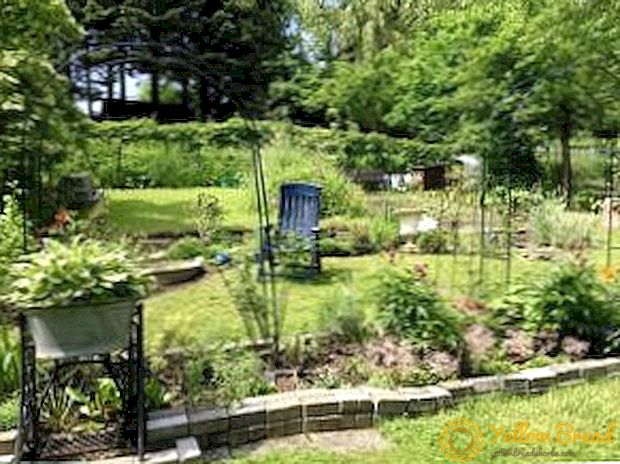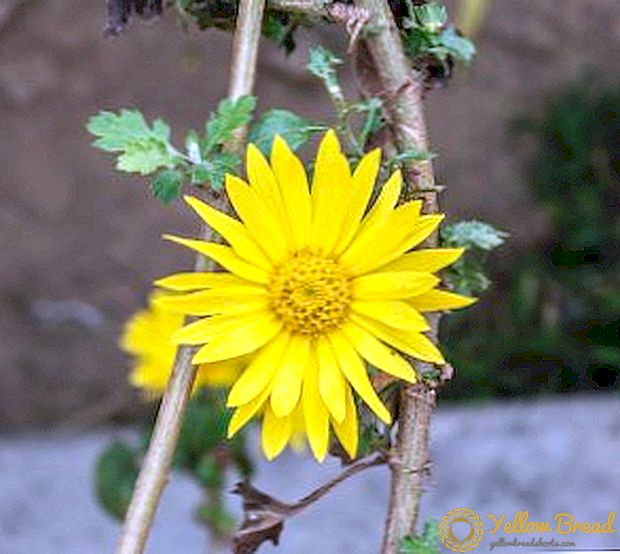 Echinocactus is a perennial plant with spherical stem, which is easily grown by housewives due to its unpretentiousness to the surrounding conditions. Cactus can be purchased either in the form of seeds, or in the form of a young plant. Under natural conditions, the cactus reaches a huge size, in a pot usually has a compact appearance. With proper care, it will please you with unusual colors, however, it will take at least 20 years to wait.
Echinocactus is a perennial plant with spherical stem, which is easily grown by housewives due to its unpretentiousness to the surrounding conditions. Cactus can be purchased either in the form of seeds, or in the form of a young plant. Under natural conditions, the cactus reaches a huge size, in a pot usually has a compact appearance. With proper care, it will please you with unusual colors, however, it will take at least 20 years to wait.
- general description
- Kinds
- Gruzoni
- Horizontal
- Parry
- Wide needle
- Multihead
- Texas
- Features of growing and care
general description
Echinocactus - The common name of some species of the cacti family, of which Mexico is the birthplace. For an unusual appearance called hedgehog cacti, are rare plants. A special feature can be called a dense cover of thorns, which protects from the scorching sun.
Adults, unlike other varieties of cacti, differ significantly from plants up to 3-4 years old. The first ones have sharp edges and dense cover of spines, while the second ones do not differ in sharp forms of the ribs, but they have specific tubercles over the entire surface. 
Kinds
Not long ago, at home, housewives could grow only one species of a plant - Gruzoni echinocactus, it is now easy to find seeds and other members of the genus (there are six species in total).
Gruzoni
The most common cactus, seeds are easy to find on sale. With proper care, the diameter of the stem of a plant reaches 40 cm. The radial spines reach a length of 3 cm, the spikes in the central part of the plant are 5 cm, and have either a straight or curved appearance.
After 3-4 years, the edges of the cactus begin to stand out clearly, in an adult plant there are from 35 to 45 pieces.

Horizontal
An adult individual is 23 cm in diameter. The characteristics of this echinocactus include 10–13 ribs twisted in a spiral, and a small number of thorns (about 5–6), which are almost flat and slightly curved.
Up to 3-4 years, the color of the thorns in plants is red; as they grow older, the color gradually changes to a rich amber. Due to this peculiarity, the variety received the name “Echinocactus red” in the people. With the right care pleases purple-red flowers.
Parry
Initially, it has a spherical appearance, but as it grows it is drawn out and reaches a height of 30 cm with 13-15 ribs. It is distinguished by large needles, reaching a length of up to 10 cm. A special feature of needles is the fact that at a young age they have a pinkish-brown color, which eventually changes to completely white.

Wide needle
Unlike other varieties, growing at home a wide-spread cactus is problematic due to its size - from 1.5 to 2 m in length and up to 1.5 m in width. It has wide needles of a flattened appearance, which are painted gray. With proper care, echinocactus blooms with bright yellow corollas.

Multihead
Cactus with colored needles (color yellow, brown-red or pink). At home it grows up to 70 cm, it has from 15 to 20 ribs and a small number of spines. It blooms rarely, the corollas are yellow.
Texas
It has a flat-spherical appearance, the adult cactus is distinguished by white down in the upper part, the spines are few, and do not exceed 6 cm in length. It rarely blossoms at home.

Features of growing and care
In order for echinocactus to delight its appearance for decades, it is necessary to ensure that it is properly cared for.
Proper growth and flowering will ensure compliance with the following nuances:
- Shine. Since Mexico is the birthplace of echinocactus, famous for its burning sun, it is imperative to ensure the arrival of sunlight. It is better to put echinocactus on the south window, and in the period of hibernation to ensure sufficient shading for it.
- Humidity. During flowering, it is desirable to prevent contact of the plant with water, in other months it is possible to carry out watering by spraying.
- Temperature. The cactus is adapted for extremely hot weather, at home in the winter months it is necessary to maintain the temperature not lower than +8 ° C.
- Watering cactus in the summer, no more than once every two weeks; in the winter and autumn, the time between waterings increases.
 Echinocactus will long please you with its unusual appearance, if you wish, you can even transfer the plant to offspring. It does not require special attention and daily watering and is enjoying the winter in a normal city apartment. Do not forget that cacti are useful - they perfectly absorb negative radiation from computer and other equipment.
Echinocactus will long please you with its unusual appearance, if you wish, you can even transfer the plant to offspring. It does not require special attention and daily watering and is enjoying the winter in a normal city apartment. Do not forget that cacti are useful - they perfectly absorb negative radiation from computer and other equipment.






